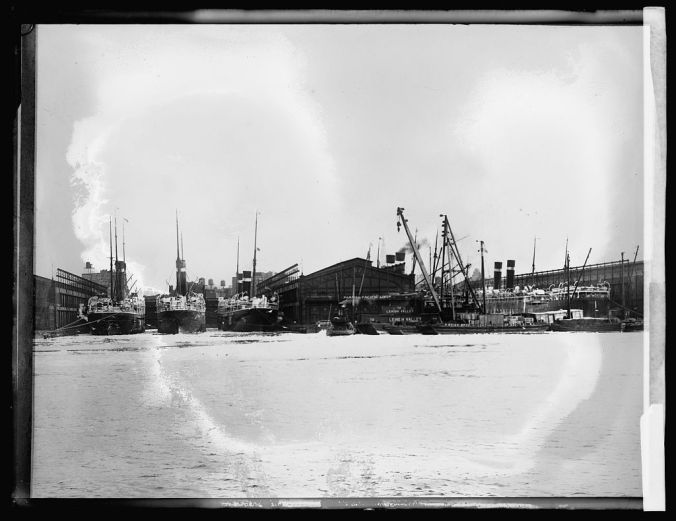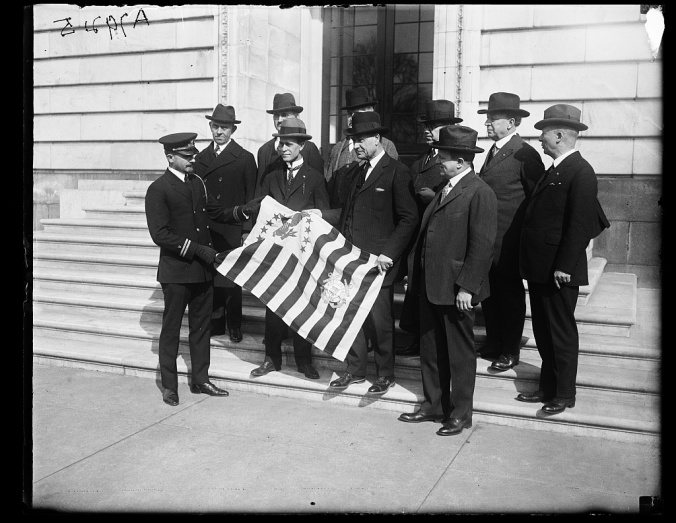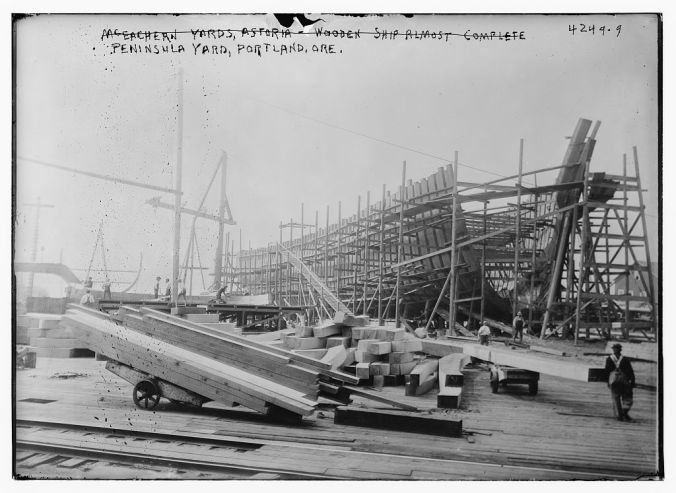
We have been all too long oblivious to the duty which we owe to ourselves as a nation. It cannot be a sound business policy to employ our competitors to transport our production to market. It cannot be a sound business policy to neglect this second line of our naval defense.
No nation ever long maintained a place in the world without a merchant marine. No nation has ever failed to grow great and powerful that had the advantage of such foreign trade as ours when borne in its own ships. This great prize cannot be developed without effort. It cannot be secured without expense.

Some ships of the merchant marine, 1920

The Jones Act, sponsored by Wesley L. Jones of Washington State, passed into law two summers before Coolidge’s speech at Portland, continues to draw sharp critics on all sides of the issue. Its repeal, long sought, has not yet succeeded. The Act maintains that shipping between U. S. ports must be: (1) Made in America, (2) Owned by American citizens, and (3) Have a crew 3/4 American. The arguments on both sides have long been exchanged but there are also good reasons for maintaining our own ships carrying our own goods to the markets interested in buying them. For Coolidge (as for Jones), the cheapest answer is not necessarily the best one.

Portland, Oregon’s Peninsula Yard, 1915. The Jones Act of 1920 had the effect of joining Portland’s shipping to the Territory of Alaska’s markets and supply needs. The Act firmly placed reliance throughout territories like Alaska and Hawaii on American ships over those of foreign suppliers.
If the people want it they must be prepared to pay for it, but the rewards of security, of prosperity, of those commercial relationships which make for the peace of the world and for the advancement of an enlightened civilization will repay us many fold.
— Vice President Calvin Coolidge, excerpt of speech at Portland, Oregon, August 15, 1922

The Navy-Merchant Marine Memorial was originally designed by San Francisco architect Harvey W. Corbett way back in 1922. It would be sculpted by Ernesto Begni del Piatta, who died in 1939 before its completion.